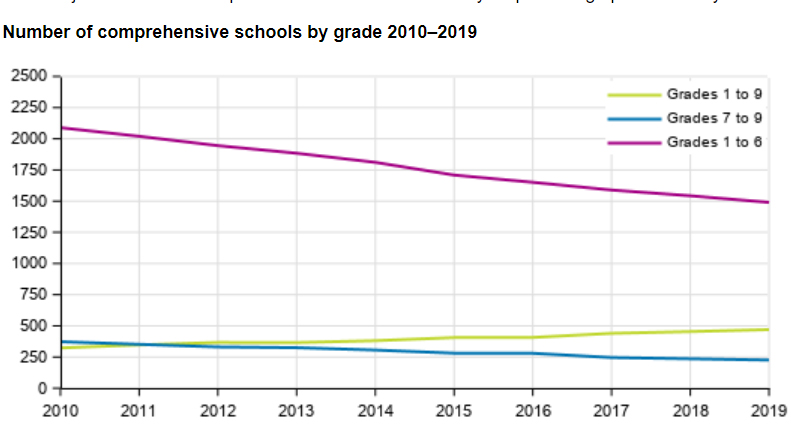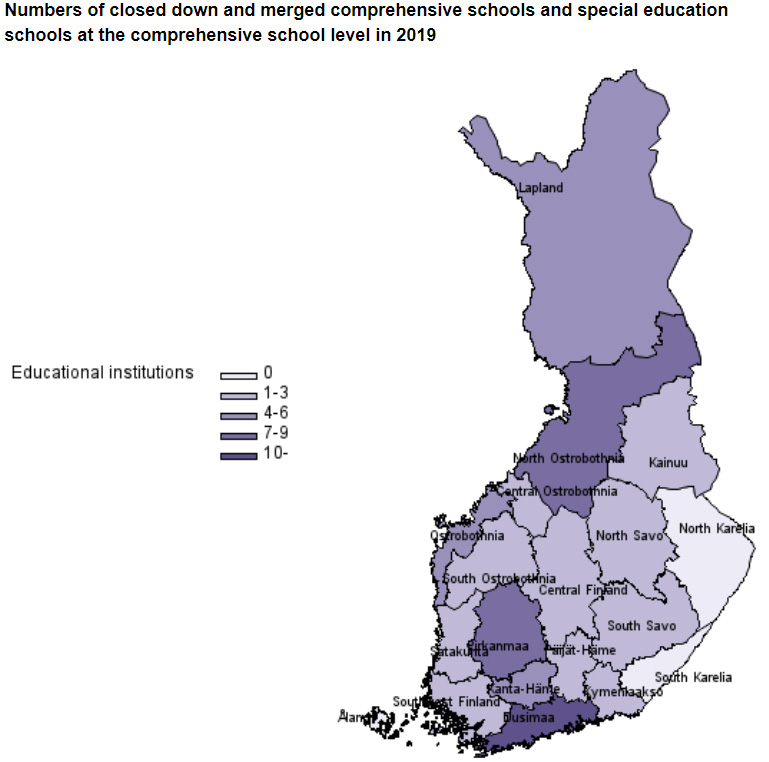The school map of Finland is changing. Not only are there fewer comprehensive schools every year, a logical consequence of the birth slump, but the new units built are larger than before and tend to comprise more students from all grades 1 to 9. In the last ten years, the average number of students per joint school grew by 28%.
In 2019, in Finland there were 2,187 active comprehensive schools with a total of 550,400 pupils, according to Statistics Finland's register of providers of education and educational institutions.
The number of active special education schools at the comprehensive school level numbered 63 and they had 4,200 pupils.

Source: Statistics Finland.
Comprehensive schools were more often than earlier joint schools comprising grades 1 to 9. If in 2010 the number of active joint schools was 323, the corresponding figure in 2019 was 470. In ten years, the share of joint schools in comprehensive schools has risen by 10 percentage points. During the same period, the share of primary schools has decreased by seven percentage points and the share of secondary schools by three percentage points.

Source: Statistics Finland.
Closed schools
A total of 61 comprehensive schools or comprehensive school level special education schools were closed down or merged with another educational institution.
Of them, 12% were educational institutions with under 20 pupils, 39% had between 20 and 49 pupils while 49% had at least 50 pupils.
Most comprehensive schools and comprehensive school level special education schools were closed down in Uusimaa, 13 in total. Second most were closed down or merged in Pirkanmaa and North Ostrobothnia, seven in both.
Bigger units than before
Measured by the average number of students, comprehensive schools are bigger units than before.
In ten years, the average size of joint schools has grown most. In 2010, an average of 360 pupils studied at joint schools, while the corresponding figure in 2019 was 460. This is a growth of 28% in the average number of pupils.
The growth in the average number of pupils in primary and secondary schools has been lower than in joint schools. In 2010, an average of 139 pupils attended primary schools, while the corresponding figure in 2019 was 169, (+22% in the average size). The corresponding figures for secondary schools were 312 pupils in 2010 and 329 pupils in 2019 (+6% in the average size).











